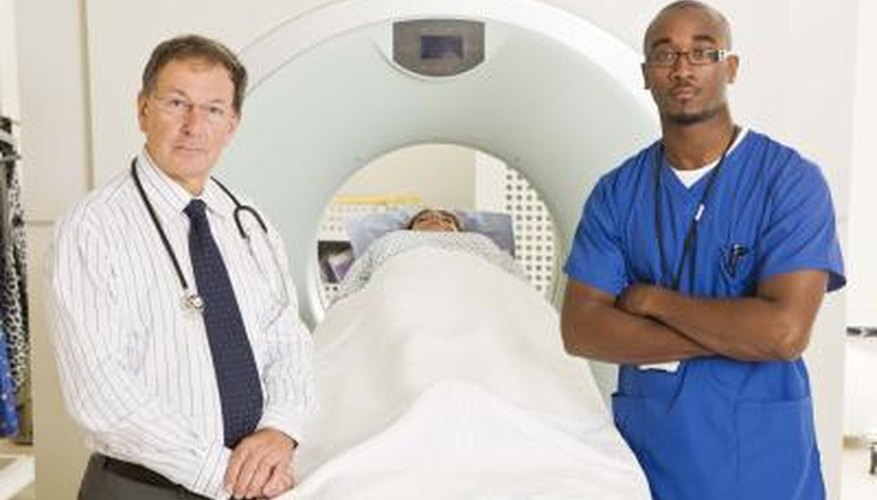Positron emission tomography (PET) scans work by injecting a patient with a radionuclide (known as a "tracer"), which can be detected by the large scanning machine. Computers locate the concentrations of the tracer compound in the body, and recreate a three-dimensional image of the area for doctors to examine. Though PET scans are mostly safe and are a useful diagnostic tool, there are a few disadvantages associated with their use.
Radioactivity
Though the amount of radiation absorbed by the body when the radionuclide tracer is injected is relatively low, it may be dangerous to patients who are sensitive to the radiation. Patients who are pregnant, may become pregnant or are breast feeding should generally avoid PET scans. Additionally, because the radioactivity persists in the body for a length of time, patients should avoid contact with sensitive persons, such as anyone who is pregnant, elderly or suffers from decreased immunity for several hours after the procedure.
Cost
PET scanning machinery is expensive for a hospital to obtain and susceptible to breaking down. As a result, hospitals bill patients a large sum of money when they use the machines. Patients who require a PET scan should expect to be charged between £585 and £910 for the scan as of 2010, though this amount may be covered partially or in full by your insurance company. Additionally, the costs associated with PET scanning machinery means that not all hospitals have machines available to use.
- PET scanning machinery is expensive for a hospital to obtain and susceptible to breaking down.
- Additionally, the costs associated with PET scanning machinery means that not all hospitals have machines available to use.
Spatial Resolution
PET scans have a relatively low spatial resolution when compared with other types of scanning procedures. This means that very small abnormalities--such as those less than 1mm in diameter--may be difficult to distinguish from blurs caused by the movement of the patient. Additionally, the limits on the amount of radionuclide tracer that can be safely injected into the body makes it difficult to clearly render the body's tissues. This means that certain abnormalities can be missed, or that false positives can be made.
- PET scans have a relatively low spatial resolution when compared with other types of scanning procedures.
- This means that very small abnormalities--such as those less than 1mm in diameter--may be difficult to distinguish from blurs caused by the movement of the patient.
Discomfort
The tracer takes between 30 and 60 minutes to reach the appropriate area in the body, and the scanning process takes between 45 and 60 minutes. Patients with limited mobility or difficulty remaining still for long periods of time may find the PET scan process uncomfortable or impossible to perform.
